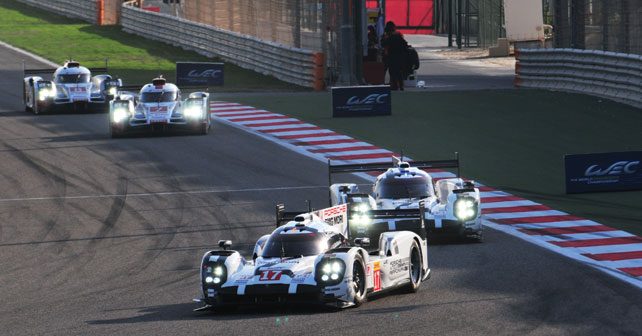April sees the shorter, more compressed track racing disciplines of Formula 1 and MotoGP get complimented with one that requires endurance along with speed.
Not winning the FIA World Endurance Championship’s (WEC) drivers’ or manufacturers’ titles the last two years would have been a matter of concern for Audi Sport’s LMP1 programme but their technical approach remain largely unchanged on account of winning the championship’s most important race – the 24 Hours of Le Mans, arguably a championship unto itself.
With a relatively large capacity turbo-diesel engine (4-litre, V6) mated to a flywheel energy recovery system, the factory squad from Ingolstadt could at least claim bragging rights over their stranglehold on the fabled French endurance event. However, that all changed when fellow Volkswagen Group company Porsche re-entered the top level of sportscar racing with a Formula 1 style, low capacity turbocharged petrol engine mated to a battery based energy recovery system that allowed them to store up to eight megajoules of energy over a lap and deploy it to good effect under acceleration.
In their second year back, Porsche’s 919 Hybrid bested last year’s WEC winners Toyota and more importantly wrestled the Le Mans crown away from Audi.
In an effort to get close to their rivals from Stuttgart, Audi has unveiled a new version of their R18 LMP1 sportscar, which does away with the flywheel system in favour of Lithium-Ion batteries for energy storage in order to move up to being able to store 6MJ instead of the 4MJ it was being able to store for the 2015 season.
By the time you read this, Toyota would have also released an updated LMP1 challenger as opposed to just having released its livery. The car will no longer use the normally aspirated V8 mated to a supercapacitor as that system has been left dead in the water by Porsche.
It will have a turbocharged V6 under three litres in capacity that will be mated to F1 style energy recovery systems.
It is a formula that Porsche used with success in its 919 Hybrid and will do so again when it launches an updated version of the car that helped it sweep all the major sportscar racing honours.
Meanwhile in the GTE Pro class, Ford’s return marks the rekindling of its storied rivalry with Ferrari. The Ford GT will do battle with the 488 Italia, which has already run with some success in the 24 Hours of Daytona and the 12 Hours of Sebring. Ford, meanwhile, have a lot to learn about their new machine.
Marino Franchitti (UK), Stefan Mücke (GER), Olivier Pla (FRA) and Andy Priaulx (UK) have been named as drivers of the Ford GT that will race for Ford Chip Ganassi Racing in the 2016 season of the FIA World Endurance Championship. The All new Ford GT will be powered by the new Twin-Turbo Ford EcoBoost V6 engine, the most powerful EcoBoost production engine to date.
Porsche’s 911 RSR and Aston Martin’s new Vantage will also fight it out in the GTE Pro class that is a playground for luxury sportscar manufacturers. However, regardless of who wins the season title, Chevrolet could yet again scoop up the 24 Hours of Le Mans crown with its Corvette while running a selective programme in the WEC.





























Write your Comment